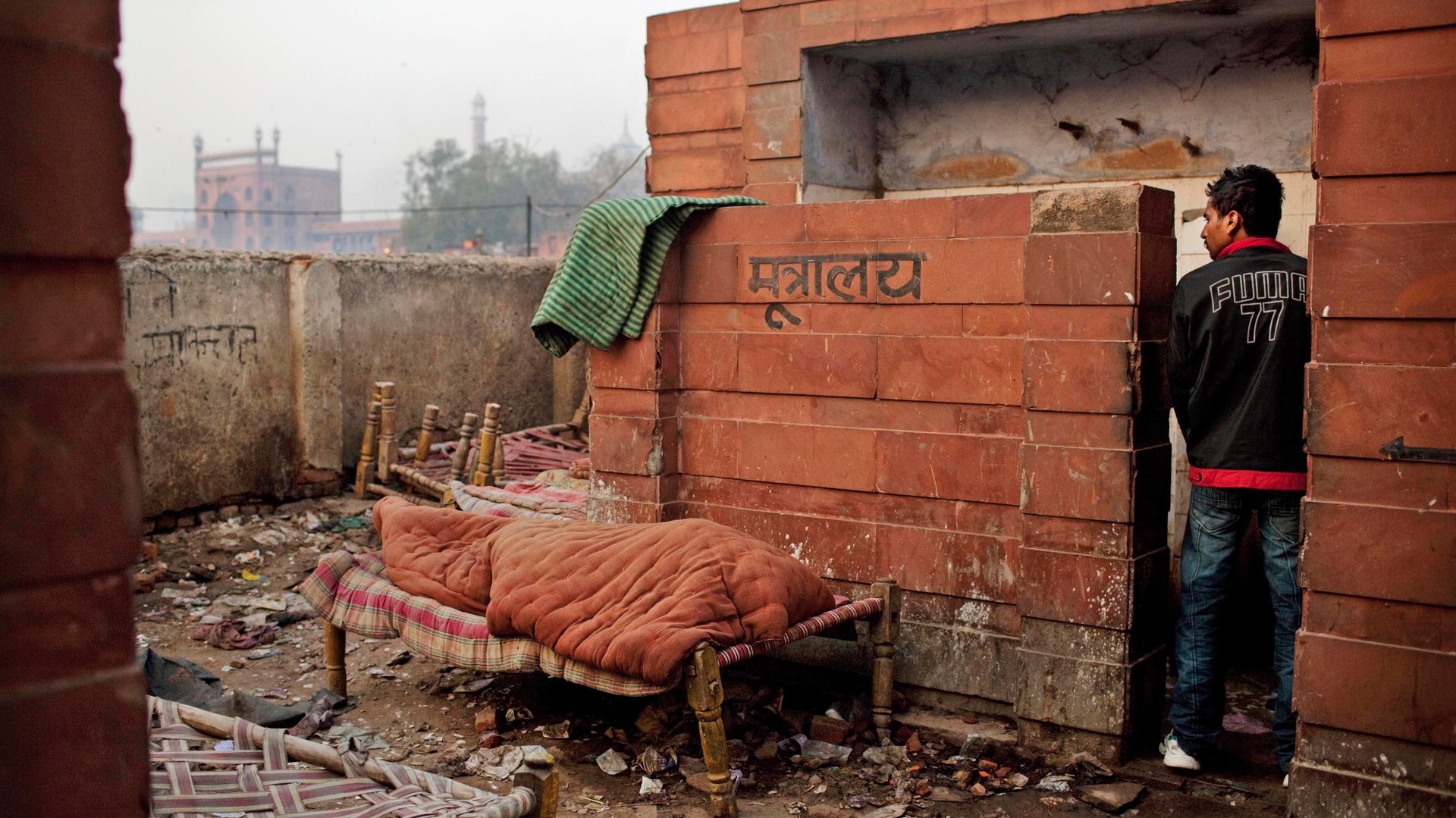In India, people are getting paid to use the toilet
The seemingly normal routine of using the bathroom is still a novelty for many in India.


The seemingly normal routine of using the bathroom is still a novelty for many in India.
More than 41 million people in urban India practice open defecation and 71.5% of the rural population does not have adequate access to sanitation facilities. The government had aimed to construct 2.5 million household and 100,000 community toilets by March 2016, but when the deadline rolled around, it had completed just over half of the private and 68% of the public bathrooms. And where there are toilets, they are in a deplorable state: doors have broken latches, cockroaches crawl on the floor, and ventilation is lacking. People also resist using toilets because some believe defecating outdoors is the status quo, while others treat the newfound luxury as a place of worship or storage.
To encourage more people to use latrines, the government has organized many drives and schemes in schools as part of the Swachh Bharat (Clean India) campaign. Together with the the Ministry of Urban Development, Google recently created an online guide to help people find their nearest public restroom in seven Indian cities.
With all these efforts failing to drive the desired results, two villages in the western state of Rajasthan, Baytu and Gida, are turning to monetary incentives to make people use the toilet.
The two village panchayats (local governments) in the Barmer district are rewarding families who use lavatories regularly with Rs2,500 ($37) each month, the Times of India reported. Indian oil-and-gas firm Cairn, together with the Rural Development Office, recently constructed toilets and conducted checks over the last few months to monitor if people were using them or not. Eight families from Baytu have been awarded so far.
Deterring people from open defecation has long been a priority for the government because it poses many health and safety concerns. It can lead to enteropathy and diarrheal deaths in children and double a woman’s risk of getting raped.
Sudhir Sharma, Barmer’s district collector who oversees revenue collection and administration in the region, told the Times of India that the scheme will benefit 15,000 families in the two areas. If successful, it will be expanded to other areas too.
This is not the first time that money is being used to increase bathroom attendance. In 2015 , Ahmedabad, in the state of Gujarat, started tipping people Rs1 (1.5 cents) to use the bathroom—an idea it lifted from a scheme in Nepal’s capital Kathmandu.